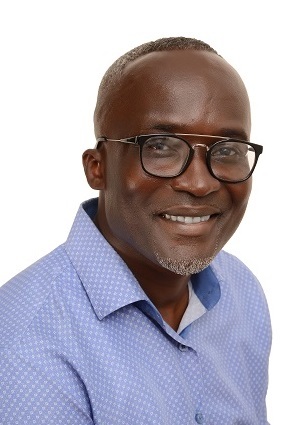Course: Tailings Dams Stability Analysis: Recent Advances in Numerical Analysis & 3D Modelling
Course Details
- Date: November 6th - 8th, 2023
- Venue: Hotel Boulevard Plaza, Sala Strauss, Av. Getúlio Vargas, 1640 Belo Horizonte, MG 30112-024
- Schedule: 9 am to 5 pm
- Instructors: This course will be in English, instructed by Dr. Reginald Hammah, Director of Rocscience Africa.
- Registration Fees:
- Early Bird Price - $1195 USD (until September 30th, 2023)
- Regular Price - $1395 USD
What’s included:
- Temporary software licenses
- PDF of course materials
- PDH Certificate
- Lunch & Snacks
Please note:
- Registrants will be responsible for their own accommodation
- Participants must bring their own laptops (and mice)
- Participant numbers are limited
Course Outline
Through a mix of presentations and 'hands-on' tutorials based on practical TSF embankment examples, the course will cover the following topics:
The Craft of Tailings Engineering
- The changing nature – and permanence – of TSFs
- The need to predict TSF performance/stability by computation and modelling
Mechanical Behaviour of Soils and Tailings
- Fundamental characteristics of soil behaviours - shearing responses of granular material (soils and tailings)
- Volume changes under shearing – dilative and contractive responses to loading.
- Change in stiffness with stress and strain levels
- Density/void ratio/state
- Dilatancy (dilation angle)
- Drained (effective stress) vs undrained (total stress) analyses
- Brittle vs ductile behaviour
- Consolidation
- Post-peak and residual behaviour
- Critical state/liquefaction
- Parameters for characterizing the mechanical behaviour of soils and tailings.
- Constitutive material relationships, including critical state soil mechanics laws.
Overview of TSF Stability Analysis and Modelling with Software
- Failure mechanisms of TSFs
- Slope instability
- Foundation failure
- Liquefaction
- Measures of stability
- Factor of safety
- Probability of failure
- Deformations
- Seepage
- Factors affecting embankment stability – review of inputs required for TSF stability analysis.
- Limit equilibrium methods (LEMs)
- Numerical methods
Fundamentals of Limit Equilibrium Methods (LEMs) and 3D Stability Analysis
- Methods of slices (Bishop, GLE/Morgenstern, Janbu, Spencer, etc.)
- Failure surface shapes
- Assumptions of LEM
- Choosing appropriate methods of slices
- When should we model in 3D?
- Developing 3D TSF models
- Interpreting 3D LEM results
Numerical Methods
- Stress-deformation analysis
- How stress-deformation analysis (deformations, strains, stress states, pore water pressures, etc.) can be used to assess dam safety and performance.
- Overview /fundamentals of numerical methods – finite element method (FEM), finite difference method (FDM), boundary element method (BEM), discrete element method (DEM)
- Shear strength reduction (SSR) method for calculating slope factors of safety.
- Development of relevant stress-deformation analysis (numerical) models that capture real-world TSF performance.
- Understanding different drainage conditions – drained, undrained, and coupled (consolidation) conditions
- Modelling pore pressures in tailings dams and foundations
- Evaluating stability (factors of safety) and deformations under various loadings (including liquefaction potential under static loadings)
- Where to put model boundaries
- Boundary conditions to be applied.
- Meshing of models
Verification of Models and Model Assumptions
- Capturing of diverse geotechnical and hydrogeological conditions, material behaviours (and associated strength parameters) under various loadings and multiple construction stages
- Judgement of analysis outputs for reasonableness (results that reflect actual performance and reproduce the essential aspects of TSF behaviours
Seepage and Groundwater Analyses
- Pore pressure changes in TSF embankments, stored tailings, and foundation
- Modelling pore pressures in tailings dams and foundations
- Steady-state seepage analysis
- Transient analysis
- Coupled analysis
- Excess pore pressure
For any additional queries, please reach out to our Latin American team.
--
Course Instructor:

Dr. Reginald Hammah, Ph.D., P.Eng. Director of Rocscience Africa holds a Ph.D. in Civil Engineering from the University of Toronto and brings over 20 years of experience in rock mechanics and geotechnical engineering. He uniquely blends practical problem-solving experience with software tools and theoretical understanding of geotechnical behavior. He is well known for breaking down complex problems into simpler, more familiar, and solvable components.
Nov 6, 2023 - Nov 8, 2023
Belo Horizonte, Brazil
The course will be conducted in English
- Early Bird: USD $1195
(until Sept 30, 2023) - Regular: USD $1395